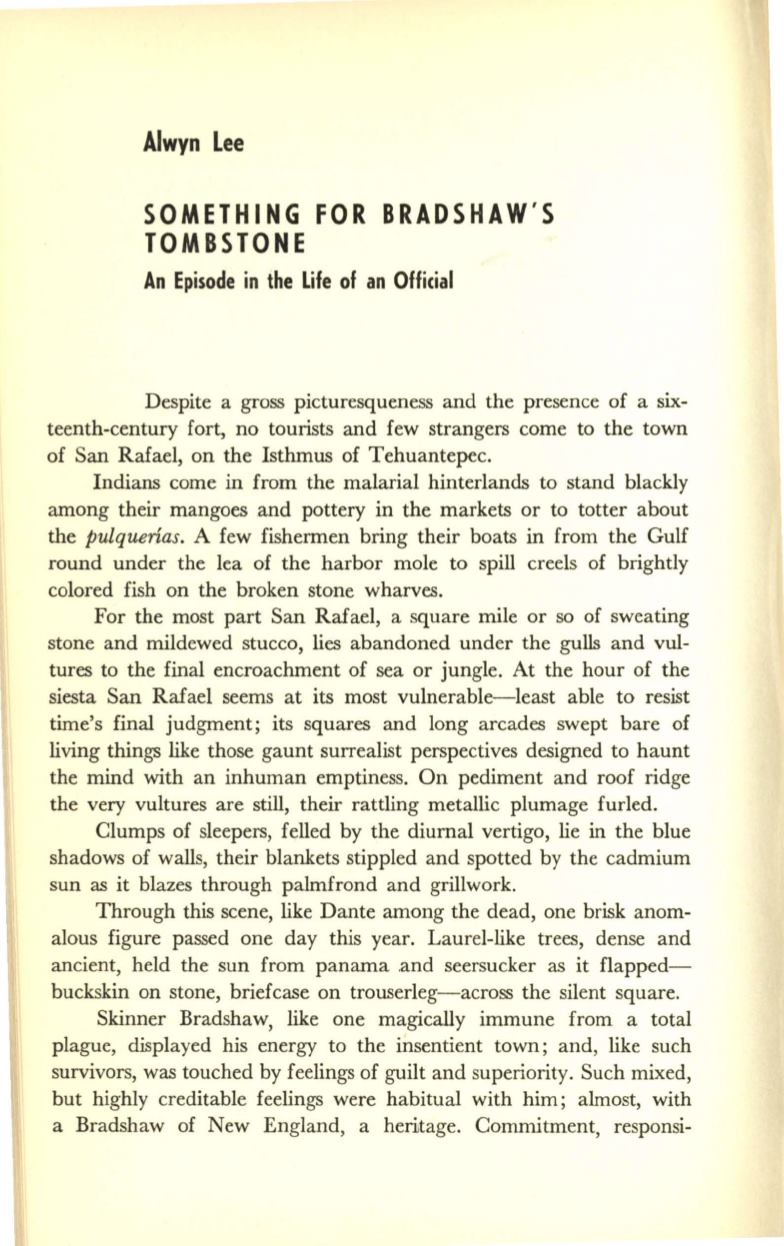
Alwyn
Lee
SOMETHING FOR BRADSHAW'S
TOMBSTONE
An Episode in the Life of an Official
Despite a gross picturesqueness and the presence of a six–
teenth-century fort, no tourists and few strangers come to the town
of San Rafael, on the Isthmus of Tehuantepec.
Indians come in from the malarial hinterlands to stand blackly
among their mangoes and pottery in the markets or to totter about
the
pulquerias.
A few fishermen bring their boats
in
from the Gulf
round under the lea of the harbor mole to spill creels of brightly
colored fish on the broken stone wharves.
For the most part San Rafael, a square mile or so of sweating
stone and mildewed stucco, lies abandoned under the
gulls
and vul–
tures to the final encroachment of sea or jungle. At the hour of the
siesta San Rafael seems at its most vulnerable-least able to resist
time's final judgment; its squares and long arcades swept bare of
living things like those gaunt surrealist perspectives designed to haunt
the mind with an inhuman emptiness. On pediment and roof ridge
the very vultures are still, their rattling metallic plumage furled.
Clumps of sleepers, felled by the diurnal vertigo, lie
in
the blue
shadows of walls, their blankets stippled and spotted by the cadmium
sun as it blazes through palmfrond and grillwork.
Through this scene, like Dante among the dead, one brisk anom–
alous figure passed one day this year. Laurel-like trees, dense and
ancient, held the sun from panama and seersucker as it flapped–
buckskin on stone, briefcase on trouserleg-across the silent square.
Skinner Bradshaw, like one magically immune from a total
plague, displayed his energy to the insentient town; and, like such
survivors, was touched by feelings of guilt and superiority. Such mixed,
but highly creditable feelings were habitual with him; almost, with
a Bradshaw of New England, a heritage. Commitment, responsi-


